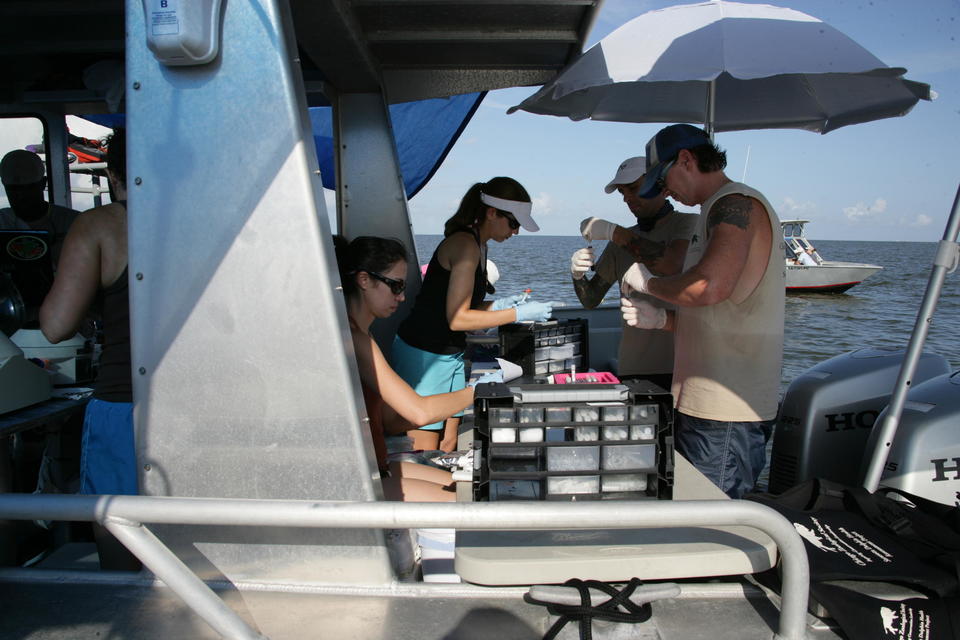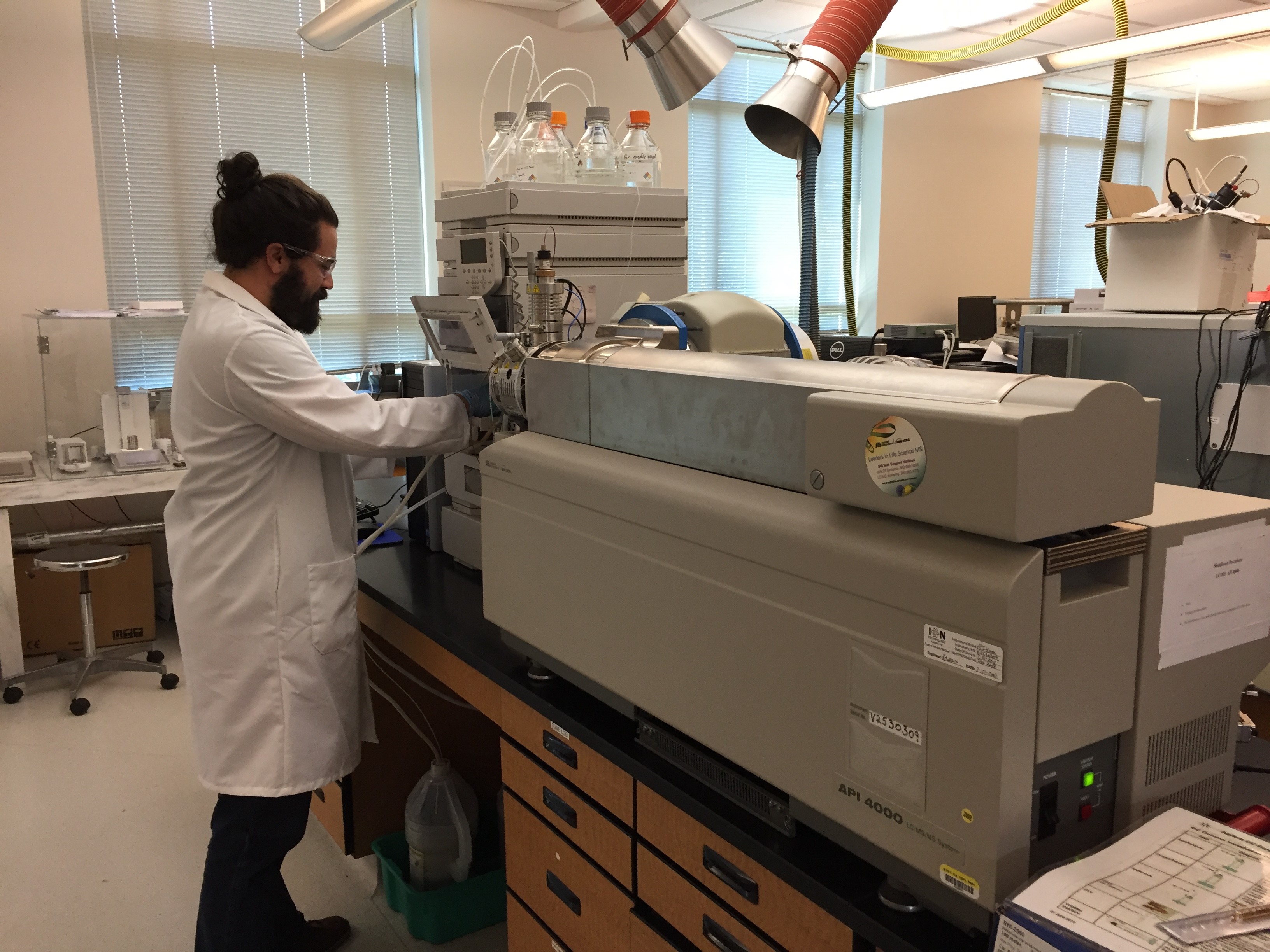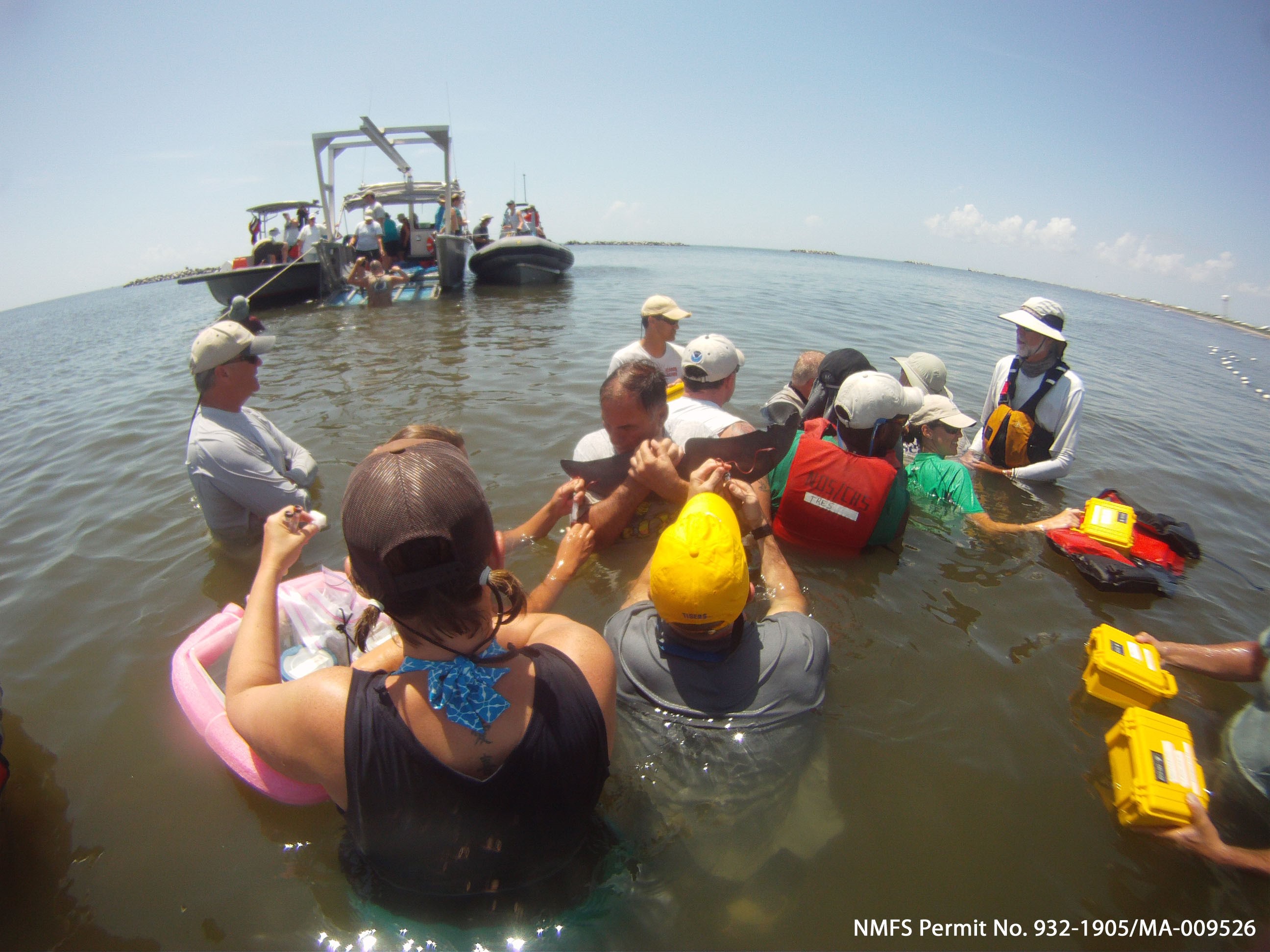Taking Measure
Just a Standard Blog

NIST Charleston researchers Ashley Boggs-Russell (sitting) and Amanda Moors (standing) work with researchers from the National Oceanic and Atmospheric Administration and the National Marine Mammal Foundation to process tissue samples during veterinary assessments of wild bottlenose dolphins in the Gulf of Mexico following the 2010 Deepwater Horizon oil spill. No dolphins were harmed in this process.
It’s usually pretty straightforward to explain how my work on clinical measurements is a benefit to society, but sometimes I get confused looks when I tell people about my work on whales, alligators and fish, to name a few.
At the National Institute of Standards and Technology (NIST), I work on measurement science for endocrinology. Endocrinology is the science of hormones such as the commonly known testosterone and estrogens. At NIST I develop new measurement methods and produce reference materials that help other laboratories to conduct their measurements as accurately as possible. This can be challenging because hormones are in such low concentrations in your body. In blood, concentrations of estradiol-17β, the main estrogen hormone for reproductive-age women, is around 15 to 350 picograms (trillionths of a gram) per milliliter in women, and even lower for men. In other words, concentrations can be as low as approximately one drop in an Olympic-size swimming pool. Developing accurate measurement methods and reference materials is important because when a doctor orders a hormone measurement to help diagnose a health problem, the results should be the same no matter which laboratory measures your sample.

However, there is an interesting quality to some hormones that makes the methods I develop applicable to more than just people. Steroid and thyroid hormones are identical in chemical structure in all vertebrates, or animals with a backbone. This means that a method developed for human endocrine measurement can also be applied to fish, amphibians, reptiles, birds or mammals. Although hormone concentrations and metabolites can vary, the molecular structures are the same. Testosterone is still testosterone in a turtle or a person.
My role at NIST is to help other scientists do the best science possible by improving measurement methods, and one of the biggest difficulties wildlife endocrinologists face is getting enough samples in a safe and cost-effective way. A great example of this was when I worked with scientists from the National Oceanic and Atmospheric Administration (NOAA) and the National Marine Mammal Foundation (NMMF) who are studying bottlenose dolphins.
These researchers and other groups use dolphins as sentinel species. A sentinel species is more sensitive to a change in the environment than humans or other populations and serves as a warning signal. The common example is the canary in the coal mine. In the early 1900s, canaries were kept in cages in coal mines to warn of carbon monoxide poisoning. Because the birds were more sensitive to the chemical, the canary would pass out upon exposure, signaling to the miners that they needed to get out before they inhaled too much, which could be fatal. Dolphins make good sentinels for marine environments because they are at the top of their food chain. This means that chemicals that accumulate in fat are amplified through the food chain and accumulate in the blubber of dolphins. Also, resident dolphin populations tend to stay in a specific territory, meaning that if a population is not doing well, there could be something in that region that is affecting their health.
Our colleagues are studying a population in the Gulf of Mexico that was exposed to the Deepwater Horizon oil spill. They found that dolphins in the area were developing adrenal insufficiency, meaning that their bodies weren’t producing enough cortisol. Although cortisol is called a stress hormone, it’s also the hormone responsible for breaking down fat to use for energy. So, while low cortisol might seem like a good thing, in this case it meant that their bodies weren’t responding correctly. NOAA and NMMF had this information but needed to keep tracking the dolphins to see if they improved and find a way to monitor other dolphin populations that might have exposure to synthetic hormone-altering chemicals.

However, collecting blood samples from dolphins is not an easy task. Our colleagues needed a way to monitor a larger number of animals. This could be done through collecting blubber samples using a remote biopsy dart collection system, but the existing technology was limiting in how many hormones could be measured. The question they brought to NIST was, could we develop a method to measure enough hormones to identify potential hormone disruptions from a piece of blubber about half the size of a pencil eraser?
By working with NOAA and NMMF, I developed a new method that could simultaneously measure eight hormones in blubber. This meant that the scientists could monitor not only cortisol, but also the reproductive hormones and other stress hormones. All this without having to catch the animal for a blood sample, which also means the animals are not stressed when the sample is taken, giving a better idea of their baseline concentrations. Though we developed this method for dolphins, it has now been applied to humpback whales and pilot whales to help monitor the health and reproduction of these protected marine species.
At NIST, we are constantly improving our measurement methods to increase the number of hormones in a single measurement at lower and lower concentrations. The measurement of hormones has so many applications. We’ve taken methods developed at NIST and applied them to many projects, including measuring hormones in women in the different trimesters of pregnancy to help clinical laboratories have confidence in their measurements for thyroid hormone health. We’re working to develop a method to measure hormones in salmon mucus to try and help salmon farmers produce better mating pairs for higher yields. We’re also working with partner institutions to apply our methods to understand reproduction in endangered species to help the populations grow. All of this is possible because the hormones are similar in all these species, and the more hormones we can add to our panel, the more we can discover. Through the collaborative and innovative spirit at NIST, our excellence in endocrine measurement science can help other scientists do more and ultimately work together to make a healthier world.





